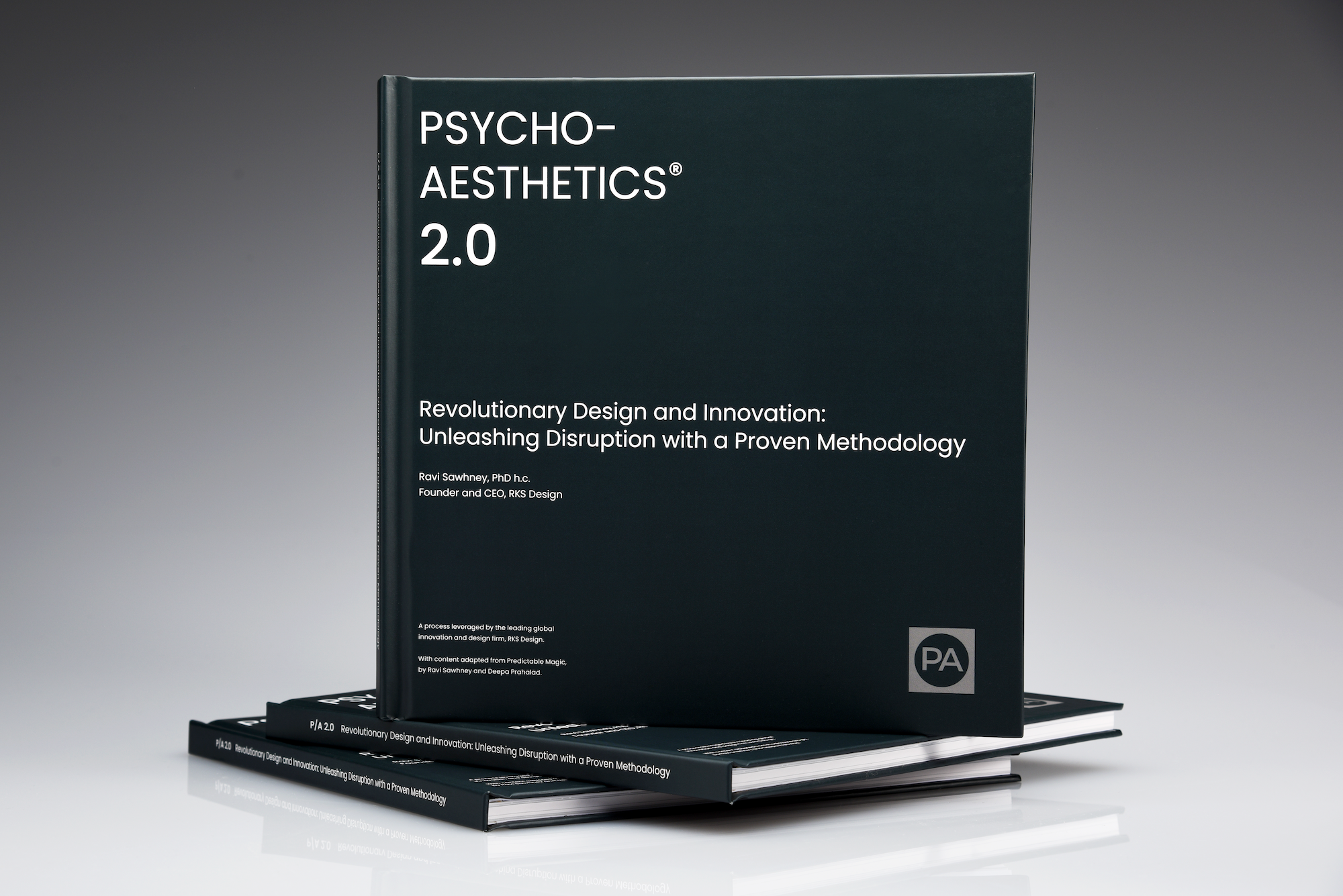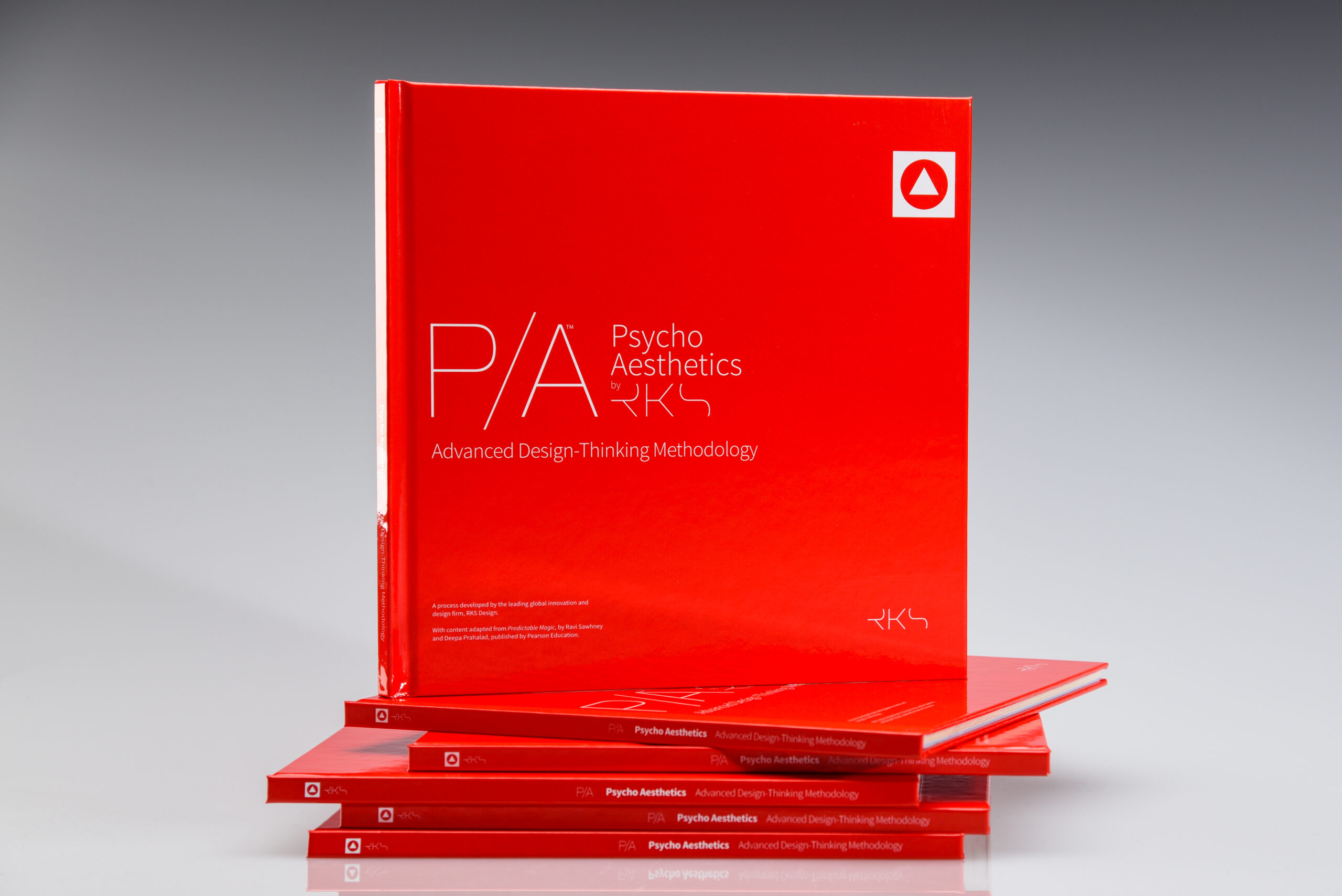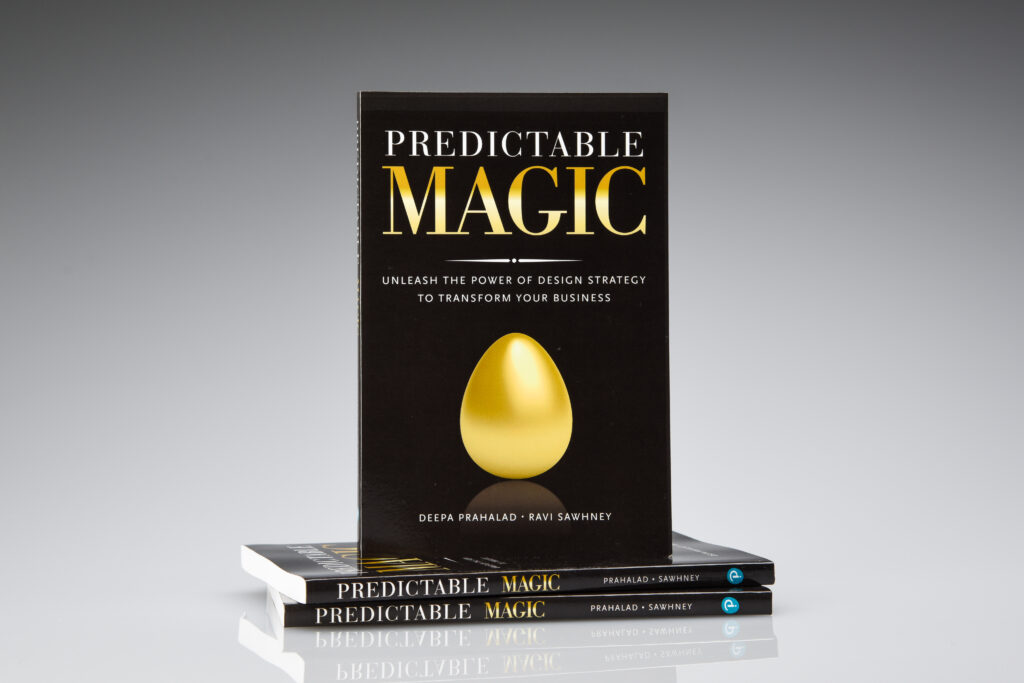Designing for Emotion,
Impact, and Adoption
Creating Experiences that Resonate & Inspire Action
Ravi Sawhney, Ph.D., is a distinguished design visionary and the CEO of RKS Design, a firm he founded in 1980. With nearly five decades of experience in design.


Hello’ Im Ravi Sawhney
Ravi Sawhney, Ph.D., is a distinguished design visionary and the CEO of RKS Design, a firm he founded in 1980. With nearly five decades of experience in design, Ravi has significantly contributed to various industries through his innovative methodologies and empathetic approach to problem-solving. He is the originator of the Human-Centered Design Thinking methodology known as Psycho-Aesthetics, which integrates psychology and aesthetics to drive design innovation. This methodology has been recognized and incorporated into the Harvard Business School curriculum, highlighting its impact on education and industry practices.
Ravi’s work has led to groundbreaking advancements in numerous fields, particularly in healthcare, where his redesign of the MiniMed 507 insulin pump revolutionized the medical device industry. By addressing the stigma associated with wearable medical devices, Ravi and his team at RKS Design increased the adoption of insulin pumps dramatically, ultimately leading to a $3.6 billion acquisition by Medtronic. His commitment to user-centric design is further evident in his projects with companies like Unilever, where he helped develop sustainable water-saving solutions for emerging markets, and with RKS Guitars, where he introduced sustainable materials and modular designs to the electric guitar industry.
Our Books

By Ravi Sawhney

By Ravi Sawhney

By Ravi Sawhney
Our Video
About The Book
Psycho-Aesthetics 2.0, Revolutionary Design & Innovation:
Psycho-Aesthetics 2.0: Revolutionary Design and Innovation – Unleashing Disruption with a Proven Methodology is the groundbreaking second book by renowned industrial designer and RKS Design founder Ravi Sawhney. Building on the success of his debut, Predictable Magic, which earned recognition as a Harvard Business School case study and classroom exercise, this new work expands on the visionary principles of Psycho-Aesthetics (P/A) to explore its transformative power across business innovation, product design, brand development, and social commerce.
In Psycho-Aesthetics 2.0, Sawhney draws from an impressive career marked by over 300 patents across 90 countries and collaborations with leading global brands such as Apple, Samsung, Medtronic, Pepsi, and Unilever. His innovative approach demonstrates how a human-centric design methodology can forge profound emotional connections, enhance consumer satisfaction, and drive disruptive solutions that redefine markets and improve quality of life.
About The Book
Psycho-Aesthetics Human-Centered Design Methodology: Design-Thinking for success
Design thinking has emerged as a critical skill of the 21st century. Psycho-Aesthetics is a critical design-thinking tool developed by RKS. This design handbook will show you the power of Psycho-Aesthetics (P/A) and how you can use it to conceive and bring to life new innovative technologies, brands, digital experiences, environments, and businesses; to create design solutions that remain fresh, inspired, and relative. For over forty years, I’ve been designing and innovating for start-ups, from KOR Water to some of the largest, well-known brands including Pepsi, Sharp, and Unilever. In every case, this repeatable, scalable, and universal tool has guided the RKS team to connect with the audiences it serves. Design is no longer just about winning awards and creating great portfolios—it’s much more. So often we help improve the quality of people’s lives and provide levels of self-esteem that can only be created through insights into the “self.” P/A helps us as designers connect and relate to our global audiences and their environments in ways that may be impossible by other means. Throughout this handbook,
About The Book
Predictable Magic: Unleash the Power of Design Strategy to Transform Your Business
Companies invest fortunes on innovation and product strategy. But, by some estimates, 80% of new products fail or dramatically underperform every year, though a few rare products succeed brilliantly. Why is this the case? Their creators have seamlessly integrated corporate strategy with design. They don’t deliver utilitarian objects: they craft rewarding, empowering experiences. To outsiders, this looks like magic: incomprehensible, and impossible to reproduce. But it isn’t. “Predictable Magic” presents a complete design process for making the “magic” happen — “over and over again.” Veteran industrial designer Ravi Sawhney and business strategist Deepa Prahalad introduce Psycho-Aesthetics, a breakthrough approach for systematically creating deep emotional connections between consumers and brands. Step by step, the authors cover everything from research to strategy, implementation to consumer experience. They also demonstrate Psycho-Aesthetics at work – in case studies from some of the world’s top companies, including Sprint, Medtronic, Amana, and Hyundai. You’ll see how these great companies have used Psycho-Aesthetics to go beyond the utilitarian (or even the merely “beautiful”), to build products that powerfully connect with people… touch them… move them… time and again.
What Our Client’s Say
Michael Gates
![]()
This visually appealing and easy-to-read book embodies the author’s insights into effective product design. The Oxford Dictionary defines psycho-aesthetics (initialized as “P/A” throughout) as the “study of the psychological aspects of aesthetic perception.” In product or solution design, two key 20th-century theories are particularly relevant to applying P/A, the book informs us: Abraham Maslow’s hierarchy of human needs and Joseph Campbell's tracing of the Hero's Journey. In practical terms, designers can use these theories to create target user “personas” to help them craft useful and pleasing products that fill needs and lead to successful outcomes. The book outlines a P/A process involving a series of “ceremonies” that groups can use to plot their design journeys. These interactions include creating a hypothesis around potential solutions, understanding what users already do so you can put them on a new trajectory, developing appropriate personas (by understanding pain points and a user’s “average day concerning the problem”), and creating a visual P/A map to guide implementation.
Note that the book’s text design and numerous helpful graphics make the eBook edition compatible only with tablet devices or reading on a computer screen.
With the included workbook section at the end, this volume will appeal to both professional designers and anyone seeking to innovate and fill a need.
Sawhney builds on his foundational principles from “Predictable Magic” and “Psycho-Aesthetics Human-Centered Design Methodology: Design-Thinking for Success” and introduces a robust and insightful expansion in “Psycho-Aesthetics 2.0.” This book delves deep into the emotional and psychological aspects of design, providing a comprehensive framework that helps designers create products and solutions that forge profound emotional connections with users.
What sets this book apart is its practical application across various fields, from product design and brand development to business innovation and social commerce. Sawhney’s real-world case studies with leading brands illustrate the tangible impact of the Psycho-Aesthetics methodology. The structured approach to understanding user responses and reducing innovation risks is invaluable, offering practical tools, templates, and guided activities that are easy to implement.
“Psycho-Aesthetics 2.0” is not just a continuation of previous ideas but a visionary expansion that emphasizes creating designs that elicit positive emotional responses. As someone who has spent years in the action sports industry, I appreciate the depth of insight and the practical strategies Sawhney offers. This book is a must-read for any designer or innovator looking to create groundbreaking and emotionally resonant products.
In conclusion, “Psycho-Aesthetics 2.0” has profoundly influenced my approach to design and innovation. I highly recommend it to my peers and anyone involved in the design process. Sawhney’s proven methodology is a game-changer that can lead to revolutionary products and solutions that significantly enhance life quality and consumer satisfaction.
Chad RR
![]()
A Breakthrough Guide to Human-Centered Innovation
This book is a total game-changer for anyone who wants to create designs or solutions that really connect with people. Ravi Sawhney lays out his methodology in a way that feels clear, approachable, and honestly kind of exciting. It’s all about bringing teams together, no matter their backgrounds, to create ideas that actually stand out and make an impact.
What really stuck with me were the real-life examples—like how they designed a sustainable electric guitar or helped rebrand for child safety. These stories aren’t just interesting; they show exactly how the methods work and why they’re so effective. Plus, the tools and strategies are super easy to follow, taking the stress out of innovation while keeping it creative and fun.
If you’re a designer, manager, or just someone who loves thinking outside the box, this book is packed with practical ideas you can start using right away. It’s perfect for anyone who wants to turn bold ideas into something real and meaningful.
Lydia
![]()
Want to lower innovation risks?
Learning about the background and process of how psycho-aesthetics was born and how it works was such a unique nod toward both marketing and psychology. Mr. Sawhney explains how this method is intended to bring together the creative minds and the not-so-visionary individuals so as to reduce the costs associated with innovation and testing out changes in products and services. I really liked how the author explains that our memory tends to recall visuals rather than words, so that is why P/A relies heavily on visuals. Not only do pictures and visual representations stick in the mind faster, but it also generates greater creativity! The world we live in is constantly changing, so in order for companies and corporations to keep up, they need up-to-date information and “boots on the ground” feedback. Switching costs and innovation costs can be enormous, so using the P/A approach is crucial in receiving accurate feedback and innovative solutions with less risk involved! P/A pulls together many voices in a company from all over the map, to include shareholders, and creates a cohesive result that benefits the company! The book is full of testimonials of how P/A has revolutionized different products and services and even has a full example with details of how to implement the process! A valuable read for any business owner or analyst.
Jed Eix
![]()
A methodology for psychologically understanding design choices
Psycho-aesthetics refers to a profound methodology for creative thinking developed by Ravi Sawhney. The general and unique premise that psycho-aesthetics provides is that design must go beyond traditional aesthetics by focusing more on the psychology of aesthetics, meaning how design influences the way we think, feel, and act. The psycho-aesthetics approach to thinking is itself based on several well-known psychological theories: Maslow’s hierarchy of needs, Campbell’s hero’s journey and Kahneman and Tversky’s prospect theory.
The book is written with practical aims, with many examples for how the psycho-aesthetic methodology can be applied, particularly when it comes to design and branding. Through the book’s guidance it becomes very clear how different products and their tangible design as well as intangible character (i.e., their branding) have psychological qualities and in fact satisfy psychological needs and desires. Knowing exactly how design choices will result in the satisfaction of psychological realities and desires and knowing how to conscientiously apply that knowledge I would say are the paramount strengths of this well-grounded work. The book itself is well-designed and can be seen as an example of its own philosophy. Although primarily for use in design contexts, the methodology can be applied really to any business context where innovation or creative thinking are required.
Maskin
![]()
I can see this book having a lot of value for a small business or start up working to create an in-house marketing and design team. This is also great for communications coordinators at independent organizations or self-employed people looking to boost their small business. The last chapter is a workbook, which is a great activity for anyone looking to boost their marketing.
The key to this psycho-aesthetics framework is beyond knowing and appealing to your audience (though that is very important). Swahney incorporates storytelling elements from the Hero’s Journey narrative structure to strengthen the product’s appeal to consumers. He also emphasizes the importance of interviewing and hearing back from your audience. This seems to be an underappreciated step in my experience with smaller businesses. Consumer response to your marketing shapes future marketing more productively. Swahney also includes detailed examples of companies that have used the Psycho-Aesthetic framework and how they went about creating their marketing and appealing to their target audience. Overall, a useful book for marketing.
Sara Schwartz
![]()
Innovation Meets Emotion: A Blueprint for Transformation in Both Design & Identity
Ravi Sawhney’s Psycho-Aesthetics 2.0 is a radical exploration of design’s transformative potential, providing a compelling framework for anyone eager to create meaningful connections through innovation. Sawhney invites readers into a journey of discovery, offering tools to unlock deeper emotional depth in their work. This isn’t merely a book about design; it’s an inspiring guide for those who seek to elevate their craft by addressing the human experience at its core.
Through insightful case studies and a clearly defined methodology, Sawhney demonstrates how design can go beyond functionality, shaping not just the products we use but how we see ourselves in relation to them. The book includes clever pathways for designers, entrepreneurs, and innovators to harness creativity in ways that are not only practical but profoundly impactful.
What sets this work apart is its focus on empowerment. Sawhney encourages readers to see beyond conventional boundaries, embracing a mindset rooted in possibility. Whether you’re a seasoned professional or new to the field, Psycho-Aesthetics 2.0 provides a set of principles that inspire confidence and spark imagination.
To read Sawhney’s work is to accept a transmutable challenge: Commit to a new, out-of-the-box approach that fuels personal and professional growth. Highly recommend for anyone willing to accept this challenge.
Alex Levine
![]()
Unusual Insights
RKS was one of the first companies to effectively use human-centered design. This book is an update to human-centered design, readily applied by anyone looking to methodically and consistently innovate, not just for RKS but for the entire design, innovation, business, and non-profit world.
P/A 2.0 finally gives us even more insight into the secret way RKS has been able to consistently deliver innovation to its clients. One person found this helpful
Morgan A
![]()
An enthralling, revoluationary way to design and innovate
I teach a class on design thinking for library students and am always looking for design methods and innovative ways to introduce library students without design backgrounds to UX and design concepts so that they can reimagine and create new library spaces, programs, materials, or any other platform for users. This book is versatile and accessible; it appeals to diverse teams that may involve people from different cultures and backgrounds or who may speak different languages. As the author says from the start, it’s important to recognize that Psycho-Aesthetics is an “open, collaborative and shared visual language” because I think this is what makes the book so usable, adaptable, and applicable across disciplines and design needs. I really appreciate the real-life examples that show how effective the process is as well; they really illustrate how well it works in different design spaces. I would recommend this to anyone interested in design, even people starting out. I think it’s easy to get discouraged and think you have to be a designer to user design processes, but choosing one like P/A, learning it, and using it is the best way to utilize design in your own areas of expertise! Readers will also learn other valuable concepts and skills like creating personas, mapping, and prototyping.
FOD
![]()
A wonderful and insightful read for anyone even thinking about how to design most anything
This is another incredible book by one of the most innovative and forward thinking designers in the world. Mr. Sawhney and his company RKS Design have been on the cutting edge of advanced thinking as it applies to design for well over 4 decades.. I have had the pleasure to work with this company on a variety of incredibly successful designs and have witnessed first-hand the results of the RKS philosophy brilliantly outlined in this book.. Regardless if you are a bigging designer, have an idea for a new product design with no idea how to proceed or have decades of design experience, this book will no doubt take you to levels You may not have known you were capable of... Well done.
One person found this helpful
Nikki
![]()
A Fantastic Read for Designers and Innovators
Psycho-Aesthetics 2.0 by Ravi Sawhney is a game-changing guide for anyone in design, innovation, or creative problem solving. It’s very rare to find a book that makes you rethink how you approach your work, but this one does exactly that.
Sawhney breaks down his methodology in a way that’s clear and easy to follow, showing how psychology and aesthetics can drive truly disruptive ideas. The focus on understanding human emotions and behaviors feels so relevant, especially in today’s world where connecting with people is everything.
The mix of big-picture concepts and actionable steps makes it perfect for both experienced professionals and newcomers. The real-world examples throughout the book make it even more practical and inspiring.
If you’re looking for fresh ways to innovate or just want to improve how you create, this book delivers. It’s insightful, approachable, and packed with ideas you can use right away. Highly recommend!
Abhinav
![]()
Designing Emotional Magic
In Psycho-Aesthetics 2.0: Revolutionary Design and Innovation, Ravi Sawhney offers more than a guidebook for design. He presents a philosophy that seamlessly merges emotion, functionality, and innovation. Through the concept of psycho-aesthetics, a blend of psychology and aesthetics, Sawhney shows how meaningful design becomes a journey of discovery for both creators and users.
Sawhney invites readers to move beyond traditional frameworks and embrace human-centred innovation that taps into deeper emotional connections. By exploring what users do and how they feel, his methodology uncovers unmet needs and crafts designs that resonate on a personal level. "Understand the user’s pain points and their average day concerning the problem," he explains, emphasizing that great design begins with empathy.
What makes this book stand out is its practical yet transformative approach. It outlines structured processes, such as ceremonies that guide teams through brainstorming and prototyping, and provides tools like visual P/A maps to turn abstract ideas into tangible outcomes. Real-life examples, such as designing for sustainability or rethinking child safety, vividly illustrate the impact of these principles in action.
The book also explores the emotional hero’s journey users experience when engaging with a product. Drawing inspiration from Maslow’s hierarchy of needs and Campbell’s Hero’s Journey, Sawhney demonstrates how to elevate designs from merely functional to truly transformational.
Ideal for designers, innovators, and anyone with a creative spark, Psycho-Aesthetics 2.0 serves as both a practical workbook and an inspiring call to reimagine the possibilities of design. This is not just about improving products; it is about creating magic that leaves a lasting impact. If you are ready to take your work to new heights, this book offers a clear path forward.
David
![]()
Transformative work that every designer and innovator should embrace!
As a creative industrial designer with three decades of experience in ID and marketing leadership, I have encountered numerous methodologies and design principles. However, Ravi Sawhney’s “Psycho-Aesthetics 2.0: Revolutionary Design and Innovation: Unleashing Disruption with a Proven Methodology” stands out as a transformative work that every designer and innovator should embrace.
Sawhney builds on his foundational principles from “Predictable Magic” and “Psycho-Aesthetics Human-Centered Design Methodology: Design-Thinking for Success” and introduces a robust and insightful expansion in “Psycho-Aesthetics 2.0.” This book delves deep into the emotional and psychological aspects of design, providing a comprehensive framework that helps designers create products and solutions that forge profound emotional connections with users.
What sets this book apart is its practical application across various fields, from product design and brand development to business innovation and social commerce. Sawhney’s real-world case studies with leading brands illustrate the tangible impact of the Psycho-Aesthetics methodology. The structured approach to understanding user responses and reducing innovation risks is invaluable, offering practical tools, templates, and guided activities that are easy to implement.
“Psycho-Aesthetics 2.0” is not just a continuation of previous ideas but a visionary expansion that emphasizes creating designs that elicit positive emotional responses. As someone who has spent years in the action sports industry, I appreciate the depth of insight and the practical strategies Sawhney offers. This book is a must-read for any designer or innovator looking to create groundbreaking and emotionally resonant products.
In conclusion, “Psycho-Aesthetics 2.0” has profoundly influenced my approach to design and innovation. I highly recommend it to my peers and anyone involved in the design process. Sawhney’s proven methodology is a game-changer that can lead to revolutionary products and solutions that significantly enhance life quality and consumer satisfaction.
Amazon Customer
![]()
Designers, creators, and innovators alike will devour this book quickly and will reap its benefits in their practices right away. While psycho-aesthetics may be a foreign concept to some, it is actually a concept that surrounds us and makes up the world that we interact and live in, so with a little focus, they will have the concept mastered in no time. The author walks you through the key insights that are drawn from psycho-aesthetics, how it has been used, and most importantly, how to shift your mind to a human-centered approach to begin to create human-centric designs. Once you’ve gained familiarity with the topic, the author teaches you about all that goes into the psycho-aesthetic process, so that when it comes to applying it to your practice, you will be well-prepared. I appreciated the author’s attention to detail and ability to break the concept down into manageable pieces that make a lot of sense and can be feasibly applied to a variety of industries. This is worth the time and money- it takes much of the risk out of innovation and gives you the opportunity to focus your work on a “sure thing,” rather than banking on your consumers/clients just “getting it.”
Sawhney builds on his foundational principles from “Predictable Magic” and “Psycho-Aesthetics Human-Centered Design Methodology: Design-Thinking for Success” and introduces a robust and insightful expansion in “Psycho-Aesthetics 2.0.” This book delves deep into the emotional and psychological aspects of design, providing a comprehensive framework that helps designers create products and solutions that forge profound emotional connections with users.
What sets this book apart is its practical application across various fields, from product design and brand development to business innovation and social commerce. Sawhney’s real-world case studies with leading brands illustrate the tangible impact of the Psycho-Aesthetics methodology. The structured approach to understanding user responses and reducing innovation risks is invaluable, offering practical tools, templates, and guided activities that are easy to implement.
“Psycho-Aesthetics 2.0” is not just a continuation of previous ideas but a visionary expansion that emphasizes creating designs that elicit positive emotional responses. As someone who has spent years in the action sports industry, I appreciate the depth of insight and the practical strategies Sawhney offers. This book is a must-read for any designer or innovator looking to create groundbreaking and emotionally resonant products.
In conclusion, “Psycho-Aesthetics 2.0” has profoundly influenced my approach to design and innovation. I highly recommend it to my peers and anyone involved in the design process. Sawhney’s proven methodology is a game-changer that can lead to revolutionary products and solutions that significantly enhance life quality and consumer satisfaction.
Johnny
![]()
Gorgeous Book! Both in design and content!
Wow, Psycho-Aesthetics 2.0 is a game-changer! It’s not just about design—it’s about how we feel, think, and connect. Ravi Sawhney breaks it down in such an engaging way, making complex ideas feel accessible and exciting.
From the very first page, I was hooked. The way he merges psychology with aesthetics is fascinating. It’s not just about making things look good—it’s about creating something that resonates on a deep, emotional level. Every chapter gave me those "aha!" moments.
The best part? It’s practical. Sawhney doesn’t just theorize—he gives real strategies and case studies that make it easy to see how these ideas work in action. Whether you’re in design, business, or just someone who loves understanding how humans interact with the world, this book is packed with insights.
And it’s not just a one-time read. I found myself going back to different sections, picking up new ideas every time. It’s one of those books that sticks with you, changes how you see things, and makes you rethink the way design impacts emotions and decision-making.
If you want to create something truly impactful, this book is a must-read. I can’t recommend it enough. Five stars, no hesitation!
Dave Destler
![]()
New and Innovative Methodology to Encourage You to Think Different
Sawhney’s seminal previous book, “Predictable Magic: Unleashing the Power of Design to Transform Your Business” was a game-changer in the field of industrial and other disciplines of design. Without attempting to describe every nuance of “Psycho-Aesthetics 2.0”—which builds on the original premise articulated so beautifully in his original volume—I will share my thoughts about the innovations and benefits developed, conveyed and applied in his globally renown industrial design firm, RKS.
Expanding on the premise that truly good design isn’t simply about how a person feels about the product or service, but how that product or service makes a person feel about themselves, Sawhney goes beyond product design and reveals his deep insights into the Human Experience. I, too, have a design background (albeit not industrial design as my vocation), and saw myself incorporating the lessons learned in his first book in my own graphic design and writing business. In “Psycho-Aesthetics 2.0” I found a yet-broader application of concepts that I see myself applying not only to business practices, but to interactions and relationships with people in my life.
I concluded that it was never meant to be a “how to” book, but more a “why” and “why not” book that answers questions we didn’t know to ask ourselves and discover new and innovative ways to succeed in our pursuits, whether design, business or self-realization. Another game-changer.
Ficeath
![]()
Design, Media Arts and Philosophy
I really liked the themes about human centered design. This book inspired me to apply economic, efficient design to all aspects of my life. If you could use a history crash course and highlight of design and media arts then this is worth a read.
Our History
Vision And Mission
Ravi Sawhney, Ph.D., is a distinguished design visionary and the CEO of RKS Design, a firm he founded in 1980. With nearly five decades of experience in design, Ravi has significantly contributed to various industries through his innovative methodologies and empathetic approach to problem-solving. He is the originator of the Human-Centered Design Thinking methodology known as Psycho-Aesthetics, which integrates psychology and aesthetics to drive design innovation. This methodology has been recognized and incorporated into the Harvard Business School curriculum, highlighting its impact on education and industry practices.
- Ravi’s work has led to groundbreaking advancements in numerous fields, particularly in healthcare, where his redesign of the MiniMed 507 insulin pump revolutionized the medical device industry.
- By addressing the stigma associated with wearable medical devices, Ravi and his team at RKS Design increased the adoption of insulin pumps dramatically, ultimately leading to a $3.6 billion acquisition by Medtronic.
- His commitment to user-centric design is further evident in his projects with companies like Unilever, where he helped develop sustainable water-saving solutions for emerging markets, and with RKS Guitars, where he introduced sustainable materials and modular designs to the electric guitar industry.
